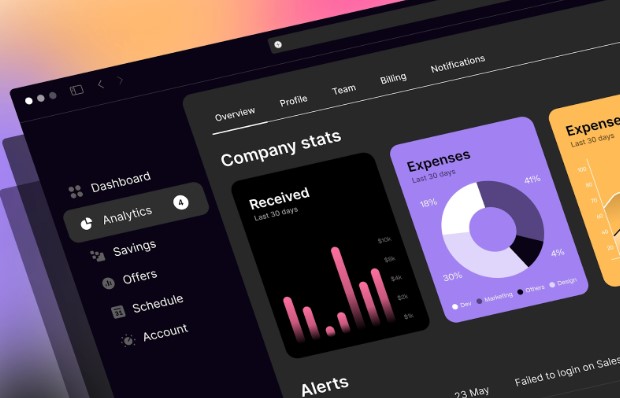How Does React Help to Elevate UI/UX in B2B Apps

Talking of the development industry, user interface (UI) and user experience (UX) of business-to-business (B2B) apps are more important than they ever were in the past. These are the elements that determine not only the way the users walk through your software but also, their satisfaction and efficiency levels.
A JavaScript library for creating UIs, React has emerged as one of the significant drivers of change in the UI/UX sector of B2B applications.
Introduction to React
React is an open-source library created by Facebook largely to create sophisticated UIs in both web and mobile applications. It is used for its effectiveness and scalability as well as employing components, which is a strong model that enables developers to create micro-constituents that themselves dictate their state, with the ability to combine them to form intricate UIs.
When you decide to enhance your B2B applications using React, the first step is to build a skilled team. It’s advisable to hire React developers who are not only proficient in JavaScript but also have a keen understanding of modern UI/UX practices.
Why Use React for B2B Applications?
- Component-Based Architecture
- Reusability
Components are reusable and can be integrated into different parts of the application without rewriting new code.
- Consistency
This approach is useful in maintaining the look and feel of a business application which is necessary in achieving consolidation of its brand image.
- Fast Rendering with Virtual DOM
React uses a Virtual DOM that allows it to know exactly when to re-render or when to ignore certain parts of the DOM. This results in better functionality and ease of use when navigating through the different layers in most B2B sites, a fundamental aspect.
- Strong Community Support
It is used by many developers because of its features like hot reloading or on-demand code preloading, state management, and many more. There are a lot of third-party libraries and tools that can be installed in React’s environment to improve its functionality, including routing solutions and Redux.
Key UI/UX Improvements with React in B2B Applications
- Enhanced User Interfaces
- Interactive Elements
Easily implement interactive elements like dynamic forms, modal dialogs, and in-context updates that keep users engaged.
- Real-Time Data
Use React to handle real-time data without bogging down the user’s browser which is ideal for applications like live dashboards or tracking systems.
- Improved User Experience
- Faster Load Times
React’s efficient update mechanism improves the speed and responsiveness of applications, an essential factor in B2B environments where time is money.
- Mobile Optimization
With the advent of React Native, businesses can now build native mobile apps using the same React principles, ensuring a seamless cross-platform user experience.
Read also: SAP Business Technology Platform vs Azure
Best Practices for Using React in B2B Applications
- Keep It Simple
Start with a minimal viable product (MVP). Add features progressively based on user feedback and analytics.
- Focus on Performance
Fine-tune the properties of the components to achieve the best possible performance. Avoid unnecessary re-renders and use lazy loading for heavy components.
- Consistent Design Language
You need to implement a consistent design system for all your apps. That not only benefits in terms of the self-image, but it also benefits by expediting the development.
Case Studies
Many leading companies have transformed their B2B applications with React to create more engaging and efficient user experiences. For instance, a major financial services firm revamped its client portal with React, resulting in a 50% decrease in loading time and a significant increase in user satisfaction.
Conclusion
React offers a component-based architecture, fast rendering, and a strong community that makes it an ideal choice for B2B applications. React not only solves the technical requirement for today’s B2B software complexity but also speaks to business users making it the right decision for any organization that wants to update its application portfolio.




